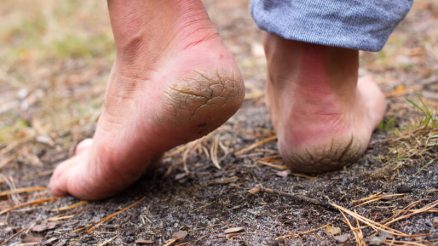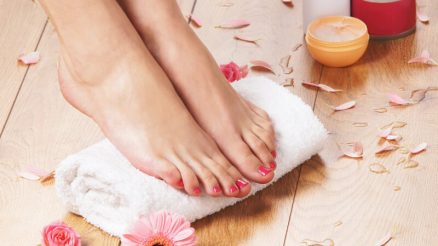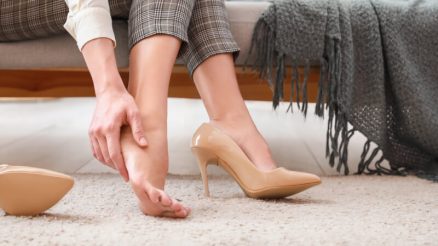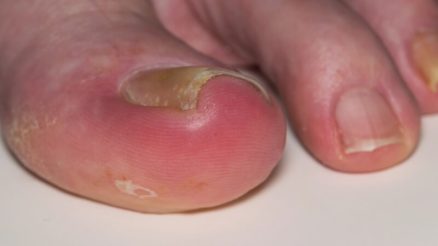When it comes to foot care, there’s no shortage of advice floating around. From age-old home remedies to modern social media tips, it can be tough to sort fact from fiction. Unfortunately, following bad advice can do more harm than good. Let’s bust some of the most common foot care myths so you can step confidently toward healthier feet.
Myth #1: You Don’t Need to Worry About Foot Health Until You’re Older
Many believe foot problems only affect older adults, but this couldn’t be further from the truth. Foot issues can start at any age, especially with factors like poorly fitting shoes, athletic injuries, or standing for long periods. Addressing issues early on prevents chronic problems later in life.
Reality: Good foot care should start early. Teaching children proper hygiene, monitoring foot development, and wearing supportive shoes can prevent future complications.
Myth #2: Cutting a Notch in an Ingrown Toenail Will Fix It
This old wives’ tale suggests that cutting a V-shaped notch in the center of a toenail will relieve pressure and guide the nail to grow properly.
Reality: There is no scientific evidence supporting this method. In fact, it can make things worse. Ingrown toenails are best managed by soaking the foot, keeping the nail trimmed straight across, and consulting a podiatrist if the condition persists or worsens.
Myth #3: Foot Pain Is Normal If You’re Active or on Your Feet All Day
While some muscle fatigue is expected after prolonged activity, ongoing or sharp pain is a red flag.
Reality: Persistent foot pain is not normal and should never be ignored. It could indicate conditions like plantar fasciitis, stress fractures, or tendonitis. Early treatment and proper footwear can prevent long-term damage.
Myth #4: Flip-Flops Are Fine for Everyday Wear
They may be convenient, but most flip-flops offer minimal support and protection.
Reality: Regular use of unsupportive footwear like flip-flops can lead to arch strain, heel pain, and even accidents due to lack of grip. For daily wear, opt for shoes with proper arch support, cushioning, and a secure fit.
Myth #5: If You Have Foot Odor, You Just Need to Wash Better
While hygiene plays a role, foot odor often stems from more than just cleanliness.
Reality: Foot odor is usually caused by bacteria breaking down sweat. Wearing breathable socks, rotating shoes, using antifungal powders, and letting shoes dry thoroughly between wears are more effective than just increased washing.
Myth #6: Bunions Are Caused Only by Tight Shoes
While tight or narrow shoes can aggravate bunions, they aren’t the sole cause.
Reality: Genetics play a significant role in bunion formation. If bunions run in your family, you may be predisposed. That said, wearing proper footwear can slow progression and reduce discomfort.
Myth #7: You Should Walk Barefoot at Home for Healthy Feet
The barefoot trend has its advocates, but going without shoes isn’t ideal for everyone.
Reality: Walking barefoot on hard surfaces can strain arches and increase the risk of injury, especially for those with flat feet, diabetes, or plantar fasciitis. Consider supportive slippers or indoor shoes.
Myth #8: Toenail Fungus Will Go Away on Its Own
Many people hope that ignoring a fungal infection will eventually lead to it clearing up by itself.
Reality: Fungal infections typically require active treatment. Without intervention, they often spread or worsen. Over-the-counter antifungal treatments can help, but persistent infections may need prescription medication.
Myth #9: Pedicures Are Always Good for Your Feet
While spa pedicures can be relaxing, they aren’t always risk-free.
Reality: Improper sanitation of tools and foot baths can lead to infections. It’s important to choose a reputable salon or consider doing a safe pedicure at home. Diabetics should be especially cautious.
Myth #10: All Foot Pain Comes from the Foot
It’s easy to assume foot pain always originates from the foot itself.
Reality: Sometimes, pain in the foot is referred from other areas, such as the lower back or hips. A thorough examination by a healthcare professional can identify the true cause.
Myth #11: Corns and Calluses Should Be Cut Off at Home
DIY removal of thickened skin may seem harmless.
Reality: Using sharp instruments or razors at home increases the risk of cuts, infection, and worsening the condition. Instead, use a pumice stone gently or seek help from a podiatrist.
Myth #12: Only Athletes Get Athlete’s Foot
Despite its name, athlete’s foot isn’t limited to athletes.
Reality: Anyone can get athlete’s foot, especially if their feet are frequently warm and moist. Locker rooms, public showers, and tight shoes can all increase risk. Keeping feet dry and wearing breathable footwear helps prevent it.
Myth #13: You Should Always Wear High Heels for Better Posture
Some believe high heels promote better alignment or elegance.
Reality: High heels shift your center of gravity forward, placing strain on the forefoot, lower back, and knees. Prolonged wear can lead to bunions, hammertoes, and back pain. Limit high heel use and choose lower, supportive options for daily wear.
Myth #14: Cracked Heels Are Only a Cosmetic Issue
While they may seem like just a beauty concern, cracked heels can be more serious.
Reality: Deep cracks can become painful and lead to infections. Regular moisturizing, gentle exfoliation, and protective footwear can help manage and prevent cracked heels.
Myth #15: Foot Size Doesn’t Change in Adulthood
Many assume their shoe size remains constant once they’re grown.
Reality: Foot size can change due to aging, weight changes, pregnancy, or medical conditions. It’s important to measure your feet periodically and adjust shoe sizes accordingly.
Takeaway: Your Feet Deserve the Truth
Your feet support your entire body, and caring for them properly can prevent a host of medical issues. Don’t let outdated myths stand in the way of healthy, pain-free movement. When in doubt, seek advice from a medical professional or licensed podiatrist to keep your feet on solid ground.








